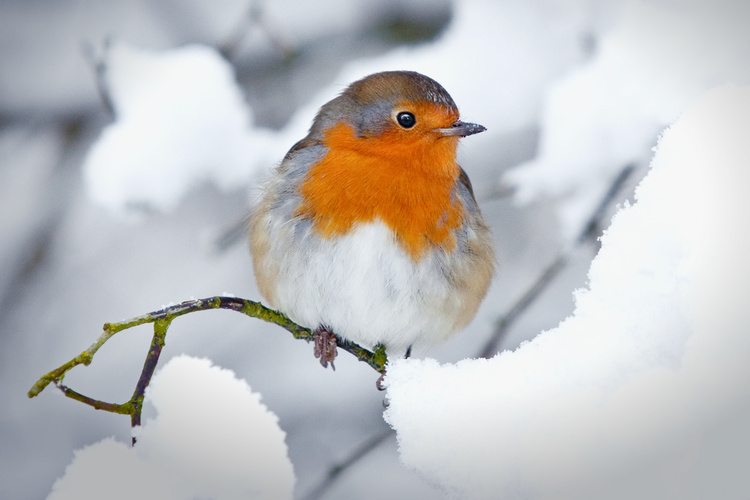
Where birds sleep has long been a mystery, but a new study is starting to unravel the nighttime secrets
By
Robins, blackbirds, dunnocks and great tits. You might assume that we know pretty much all there is to know about the birds we share our gardens with. But many mysteries do, in fact, remain, including, incredibly, where our favourite garden birds actually sleep (roost) during Britain’s long winter nights.
But now, a new study conducted by the University of Gloucestershire thinks it solved the nighttime secrets of the dunnocks and their friends. We probably don’t need to point this out to you, but during the UK, winter nights can seem pretty eternal, and woodland birds have to survive up to 16 hours of cold and darkness with no opportunity to feed. This means that selecting the right place to bed down for the night is crucial if they want to join in the dawn chorus the next day.
Teaming up with the Gloucestershire Naturalists Society, the team used Very High Frequency (VHF) radio tracking to settle down to track four of the UK’s best-known birds, robins, blackbirds, dunnocks and great tits, as they settled down to rest at night at three different locations in Gloucestershire.
The study results have shown that the robin, which was the study bird that roamed the least, preferred to roost within eight metres of its previous night’s roosting spot. The other three subject species, though, were more adventurous and would roost up to 20 metres from their roosting spot of the previous night.
Height Matters
And when it comes to height above ground level, the robin and dunnock prefer to sleep no more than four metres above ground, while the blackbird and great tit have more of a head for heights and will sleep at up to six metres above the ground.
A Comfy Bed
The study birds are also pretty fussy about what their bed is made from, with robins finding laurel trees the more appealing, great tits chose to bed down on the branches of a majestic beech or sycamore (though they’re not against sleeping in a laurel tree). Dunnocks favour ivy-covered tree stumps, bramble, Hawthorn and various garden shrubs, while the blackbird isn’t too fussy about what its bed is made from and will roost in a range of habitats, including bamboo, sycamore, brambles, laurels and evergreen pines.
Dr Mark O’Connell, Senior Lecturer in Practical Ecology at the University, said: ‘Our findings suggest that none of the birds we were tracking flew large distances to get to their roost sites, but were using vegetation in local areas where they were located during the day. It was clear that there were differences between the species in roosting behaviour, particularly in relation to variation in height of the roost site and the vegetation types used.’
With recent national assessments showing that there has been a 37 per cent decline in woodland bird species in the UK since 1970, the team hope that, as well as helping to solve one of the great mysteries of British wildlife, the data can also be used to help inform and support management practises in woodland areas to protect species.
The study is not yet finished, though, and O’Connell continued by saying, ‘We look forward to carrying our further research to help inform woodland management practices, including around the relationship between habitat use and availability, and how supplementary feeding by humans might affect roosting behaviour.’
Related articles:




